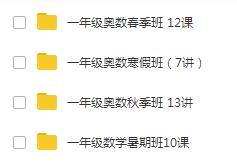所需基本库
numpyscipymatplotlib全章目录【本节:监督学习:住房数据的回归】简介:问题设置使用 scikit-learn 进行机器学习的基本原理监督学习:手写数字的分类监督学习:住房数据的回归测量预测性能无监督学习:降维和可视化特征脸示例:链接 PCA 和 SVM特征脸示例:链接 PCA 和 SVM参数选择、验证和测试6.4.监督学习:住房数据的回归在这里,我们将做一个回归问题的简短示例:从一组特征中学习一个连续值。
6.4.1. 快速浏览数据我们将使用 scikit-learn 中提供的简单波士顿房价集。这记录了波士顿周围房地产市场的 13 个属性的测量值,以及中位数价格。问题是:你能根据新市场的属性预测其价格吗?
>>>
>>> from sklearn.datasets import load_boston>>> data = load_boston()>>> print(data.data.shape)(506, 13)>>> print(data.target.shape)(506,)
我们可以看到只有 500 多个数据点。
该DESCR变量对数据集有很长的描述:
>>>
>>> print(data.DESCR) Boston House Prices dataset===========================Notes------Data Set Characteristics: :Number of Instances: 506 :Number of Attributes: 13 numeric/categorical predictive :Median Value (attribute 14) is usually the target :Attribute Information (in order): - CRIM per capita crime rate by town - ZN proportion of residential land zoned for lots over 25,000 sq.ft. - INDUS proportion of non-retail business acres per town - CHAS Charles River dummy variable (= 1 if tract bounds river; 0 otherwise) - NOX nitric oxides concentration (parts per 10 million) - RM average number of rooms per dwelling - AGE proportion of owner-occupied units built prior to 1940 - DIS weighted distances to five Boston employment centres - RAD index of accessibility to radial highways - TAX full-value property-tax rate per $10,000 - PTRATIO pupil-teacher ratio by town - B 1000(Bk - 0.63)^2 where Bk is the proportion of blacks by town - LSTAT % lower status of the population - MEDV Median value of owner-occupied homes in $1000's...
它通常有助于使用直方图、散点图或其他绘图类型快速可视化数据片段。使用 matplotlib,让我们显示目标值的直方图:每个邻域的中位数价格:
>>>
>>> plt.hist(data.target) (array([...
让我们快速看一下某些特征是否比其他特征更适合我们的问题:
>>>
>>> for index, feature_name in enumerate(data.feature_names):... plt.figure()... plt.scatter(data.data[:, index], data.target) <Figure size...
有时,在机器学习中,使用特征选择来决定哪些特征对特定问题最有用是很有用的。现有的自动化方法可以量化这种选择信息量最大的特征的练习。
6.4.2. 预测房价:一个简单的线性回归现在我们将使用scikit-learn对住房数据执行简单的线性回归。有许多使用回归量的可能性。一个特别简单的是LinearRegression:这基本上是一个普通最小二乘计算的包。
>>>
>>> from sklearn.model_selection import train_test_split>>> X_train, X_test, y_train, y_test = train_test_split(data.data, data.target)>>> from sklearn.linear_model import LinearRegression>>> clf = LinearRegression()>>> clf.fit(X_train, y_train)LinearRegression(copy_X=True, fit_intercept=True, n_jobs=1, normalize=False)>>> predicted = clf.predict(X_test)>>> expected = y_test>>> print("RMS: %s" % np.sqrt(np.mean((predicted - expected) ** 2))) RMS: 5.0059...
我们可以绘制误差:预期作为预测的函数:
>>>
>>> plt.scatter(expected, predicted) <matplotlib.collections.PathCollection object at ...>
尽管显然存在一些偏差,但该预测至少与真实价格相关。我们可以想象通过计算真实价格和预测价格之间的 RMS 残差来评估回归器的性能。然而,其中有一些微妙之处,我们将在后面的部分中介绍。
from sklearn.ensemble import GradientBoostingRegressor# Instantiate the model, fit the results, and scatter in vs. out











